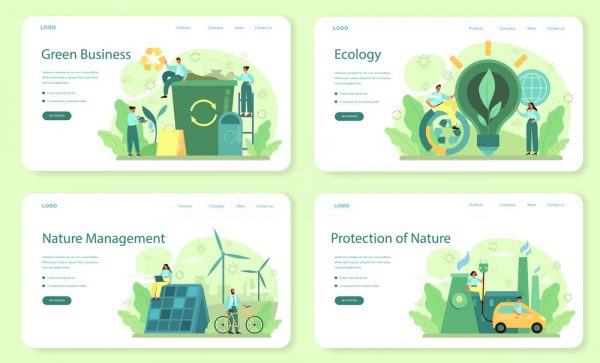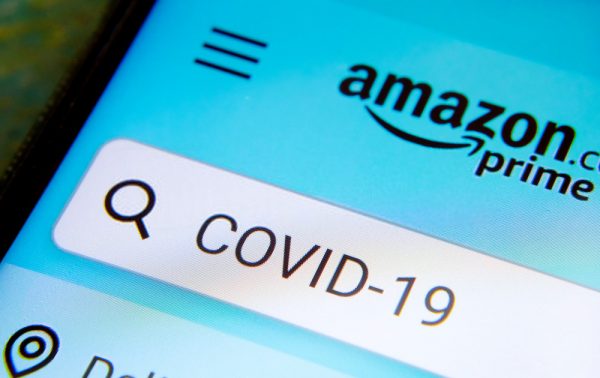Since the industry can be unpredictable, it isn’t easy to predict the longevity of each trend that pops up. Nonetheless, there are still a number of ecommerce trends that are almost guaranteed to take place. What are they and how should you respond to each of them? Here are the top 20 ecommerce trends you should watch out for in 2022.
Top 20 Ecommerce Trends In 2022
1. Artificial Intelligence and Shopper Profiling
It’s no secret that artificial intelligence (AI) and machine learning have played big roles in modern-day advertising. AI tracks your personality, experiences, and preferences based on your behavior online through social media or other apps. With the use of AI, shopping experiences can be personalized. This is one of the ecommerce trends that have taken off in previous years. Moreover, it’s more advantageous for ecommerce merchants because it’s not something that physical stores can replicate at all. Hence, it’s safe to say that it’ll grow even more prominent in 2021 and onwards. Consumers might even find themselves getting the best recommendations from machine learning — preferences that even they might not have expected.
2. Augmented Reality In Online Shopping
Virtual reality (VR) and augmented reality (AR) have been prominent in social media apps and video games. However, we haven’t seen these technologies used on a wider scale. This is set to change in the coming years when AR ecommerce trends are expected to take off. One of the weakest parts of ecommerce is the inability to check products in person. Shoppers don’t always know what to expect and can’t easily make purchasing decisions without double-checkin their decisions. However, that kind of perception might fade with the advancement of AR. Soon, AR technology will enable shoppers to preview the products they intend to buy. They can project images of the products onto real-life surfaces and bodies, becoming a way of “trying out” products before making a purchase. This will let consumers feel less reluctant to shop online, potentially increasing ecommerce sales by a large margin in the process.
3. Voice Search
Each year, we see a rise in the number of Americans that own a smart speaker. Americans are increasingly relying on voice searches and assistants for their daily routines. And according to Loop Ventures, around 75% of American homes will own a smart speaker by 2025. As a result, we can expect voice searches to become one of the largest ecommerce trends in the next decade. Companies can use this information to optimize their digital stores to contain important keywords and content for voice searching.
4. Chatbots for Better Shopping Experience
There are already a plethora of chatbots dominating the ecommerce space. However, it’s expected that the majority of businesses will adopt the trend in the coming years. It’s certainly one of the ecommerce trends that’s expected to only grow. We can see why that’s the case, too: most shoppers want to find what they want within just a few taps. However, some online stores can get complicated, especially with multiple categories and hundreds of items in their catalogs. This is precisely where chatbots can become handy, acting as digitalized in-store sales associates.
5. Evolution of Social Media in Ecommerce
Just a few years ago, you wouldn’t think of social media as the main platform for ecommerce. However, it’s currently one of the key ecommerce platforms that have gained significant traction over the years. More and more shoppers turn to businesses on Facebook and Instagram to directly purchase their desired products. This is a great thing for businesses as it doesn’t cost anything to put up a social media business. Moreover, it creates great opportunities for brands as long as they know how to manage their social media presence. It’s also an efficient strategy because social media platforms tend to optimize user experience by recommending your businesses to your intended audience. With social media becoming more a part of our daily lives, it seems this trend is here to stay.
6. Growth In Mobile Shopping
One of the more obvious ecommerce trends on this list is the growth of mobile shopping. As people spend more time on their mobile devices, it’s only natural that they will do their shopping on the go. Hence, it’s unsurprising that total mobile shopping sales amounted to $2.66 trillion in 2020. Of course, this number is only expected to grow in 2021 — it’s estimated to balloon by 18.8%, in fact. Therefore, businesses must learn to adapt their ecommerce platforms to accommodate mobile users. This includes creating apps or utilizing other app-based marketplaces to conduct business. In addition, the growth of trust in online shopping further reinforces this trend, especially in light of the COVID-19 pandemic. Moreover, with money flowing into the hands of the younger generation, businesses should be able to adapt to this change.
7. Big Data for Personalized Experiences
It’s no secret that one of the biggest ecommerce trends in the last decade was personalization from big data. In fact, many people already understand that digital platforms are collecting their data for profit. However, it seems that big data isn’t going anywhere despite the backlash in public opinion. In fact, tech giants are still growing and expanding their big data efforts with no signs of stopping. On the other hand, there’s also a huge caveat to this trend in legislation. There’s a big possibility that more and more countries will enact legislation against this ecommerce strategy, but it’s unlikely that it will disappear completely. Instead, providing a clear opportunity to opt out of data collection seems to be the likely way forward for everyone.
8. Subscription Services Retain Customers
Over the last decade, subscription-based services have also experienced a huge boom. Companies like Netflix, Spotify, Microsoft, and Adobe prove that this is a trend that shouldn’t go unnoticed. Subscription services usually don’t demand a hefty monthly fee, so customers feel they’re affordable. Furthermore, from a business owner’s perspective, subscriptions are guaranteed sales that can keep organizations afloat. Hence, it’s unsurprising that subscription-based models emerged as a trend and will continue to grow as a trend moving forward.
9. Headless And API-Driven Ecommerce
Headless commerce utilizes API to decouple backend layers from the frontend presentation. It’s one of the growing ecommerce trends that allow for endless personalization and massive flexibility. Moreover, it’s beneficial for online businesses over time because it also enhances SEO, digital experiences, and content marketing.
10. Omnichannel Strategies
Most customers want to shop through multiple platforms with the same level of ease. That’s understandable because it’s more convenient to shop across different platforms, whether it’s through the web, tablet, or mobile phones. This is why it’s unsurprising that omnichannel strategies are an emerging ecommerce trend. On the other hand, these different platforms are only the beginning of the growth of omnichannel strategies. Many companies are already optimizing their businesses to sell their products and services on social media.
11. B2B Growth And Change
While B2C online merchants have grown with the rise of ecommerce, people feared B2B will fall out of style. But to everyone’s surprise, B2B thrived and is expected to grow even further in the coming years. In fact, B2B sales are expected to amount to $1.1 trillion by this year. Moreover, millennials make up half of the adult population since 2020. Millennial B2B customers are more open to online B2B purchases than previous generations. It’s even highly preferred among this generation because they don’t want to speak to salespeople in order to purchase products and services. As a result, the online B2B model is not only surviving but is also flourishing.
12. Shoppable and Interactive Video Ads
Gone are the days of newspaper ads full of words and shabbily drawn images. Technology has advanced over the past few decades and so has advertising. Ads have become increasingly visual, always aspiring to capture their potential customers’ attention. However, while photos and stills make great advertising, videos are also a strong medium for this purpose. When you use apps on your phone, you’re likely to run into advertisements of different kinds. However, if you’ve paid close attention over the past few years, more ads have been delivered as videos. This trend isn’t going away and is only expected to grow even more. In fact, some believe these videos will become more immersive in order to convince the customer to purchase the product or service they’re advertising.
13. Online Marketplaces Over Ecommerce Stores
It’s unsurprising because these marketplaces do offer multiple conveniences like free shipping, trusted brands, and an all-in-one shopping center. Moreover, these services also provide a lower barrier to entry for new vendors that aren’t as reputable. They provide lots of traffic and exposure for smaller enterprises.
14. Young Consumers Change Ecommerce
It’s undeniable that young consumers are usually more open to digital platforms than their predecessors. This is especially evident during the COVID-19 pandemic which saw an uptick in ecommerce sales. In fact, while online spending has increased across all demographics, it’s still the younger generation that accounts for the majority of these transactions. It’s safe to expect that the younger generation will play the biggest role in shaping ecommerce, even after COVID-19 dies down. This is why online businesses have specifically adapted to the younger generation’s preferences. Their target market should mostly consist of young people because older demographics aren’t as likely to shop online. This also means that businesses should consider investing on their social media marketing efforts because most young adults usually discover brands through those platforms.
15. Environmental Consciousness and Consumerism
Green consumerism has also garnered significant attention as of late. Customers are increasingly aware and conscious of environmental friendliness when purchasing products. In fact, according to the Global Web Index, almost four in 10 consumers say that they’re environmentally conscious buyers. More specifically, poor environmental consciousness in businesses influences their buying habits. In light of this, ecommerce businesses should learn to create and practice more sustainable business practices. This includes everything from purchases to manufacturing to packaging and disposal.
16. More Attention to Independent Businesses
In the past, consumers would have trusted larger, more reputable brands over smaller, independent ones. However, the tides are shifting as more consumers become more open to the idea of shopping from independent merchants. COVID-19 played a big part in contributing to this trend as there was an increase in support for independent businesses to help them sustain their livelihoods. However, the pandemic wasn’t the only reason for the increased interest in independent businesses. Many shoppers like to buy from new independent brands for different reasons as well. For example, many shoppers choose independent brands because their products are fresh and unique. Others choose them because they provide better customer service.
17. Diverse Modes of Payment
Having diverse modes of payment are a plus for both online businesses and consumers alike. One of the reasons for this is that there has recently been a rise in digital wallets and online currency. For example, many people use online wallets like Google Pay, Samsung, PayPal, and Apple Pay to purchase goods. Moreover, cryptocurrencies have also taken off in spite of shaky public opinion. As a result, people have diversified how they keep their money. They no longer keep only wallets with cash, debit, and credit cards. Many people shop with partner stores that have their payment mode of choice. Hence, ecommerce businesses would also do well to increase their payment options.
18. Visual Commerce
We’ve already touched on interactive video ads as a rising ecommerce trend, but this is merely a small part of a larger whole called visual commerce. Visual commerce is tongue in cheek: it uses more visual means to get to their market. This can be through any visual media like videos, interactive content, augmented reality, or even consumer-generated content. These kinds of content make ads not only visual but even completely immersive. By far, the industry anticipates image recognition to be the biggest player in this trend because about 75% of Americans search for visual media before buying a product.
19. Post-Pandemic Growth
The COVID-19 pandemic has undoubtedly changed people’s behavior, and we’re not just talking about shopping habits. Because of this extended period of lockdown and social distancing, attitudes toward ecommerce might also change permanently.
20. Influencers As Brand Partners
It’s no secret that influencers have grown in, well, influence over the past decade. We see more and more YouTubers, Twitch streamers, and Instagram models attain celebrity status, especially among the youth. As a result, these online influencers will become brand partners, becoming a large part of marketing moving forward. You shouldn’t be surprised if your favorite influencers soon obtain brand deals instead of just paid sponsorships. Moreover, ecommerce businesses might even play a role in expanding an influencer’s reach and audience to benefit their marketing efforts.
The Ever-Changing Landscape of Ecommerce
Ecommerce grew in the past two decades and will grow even further in the future. Not only are consumers more open to online shopping, many even prefer it over traditional physical stores. That’s because online shopping is more convenient and even needed, especially in a pandemic like COVID-19. However, ecommerce businesses won’t survive if they can’t adapt to changing trends. This is why it’s important to stay vigilant, anticipate the rising ecommerce trends, and even plan your business decisions in accordance with them.










